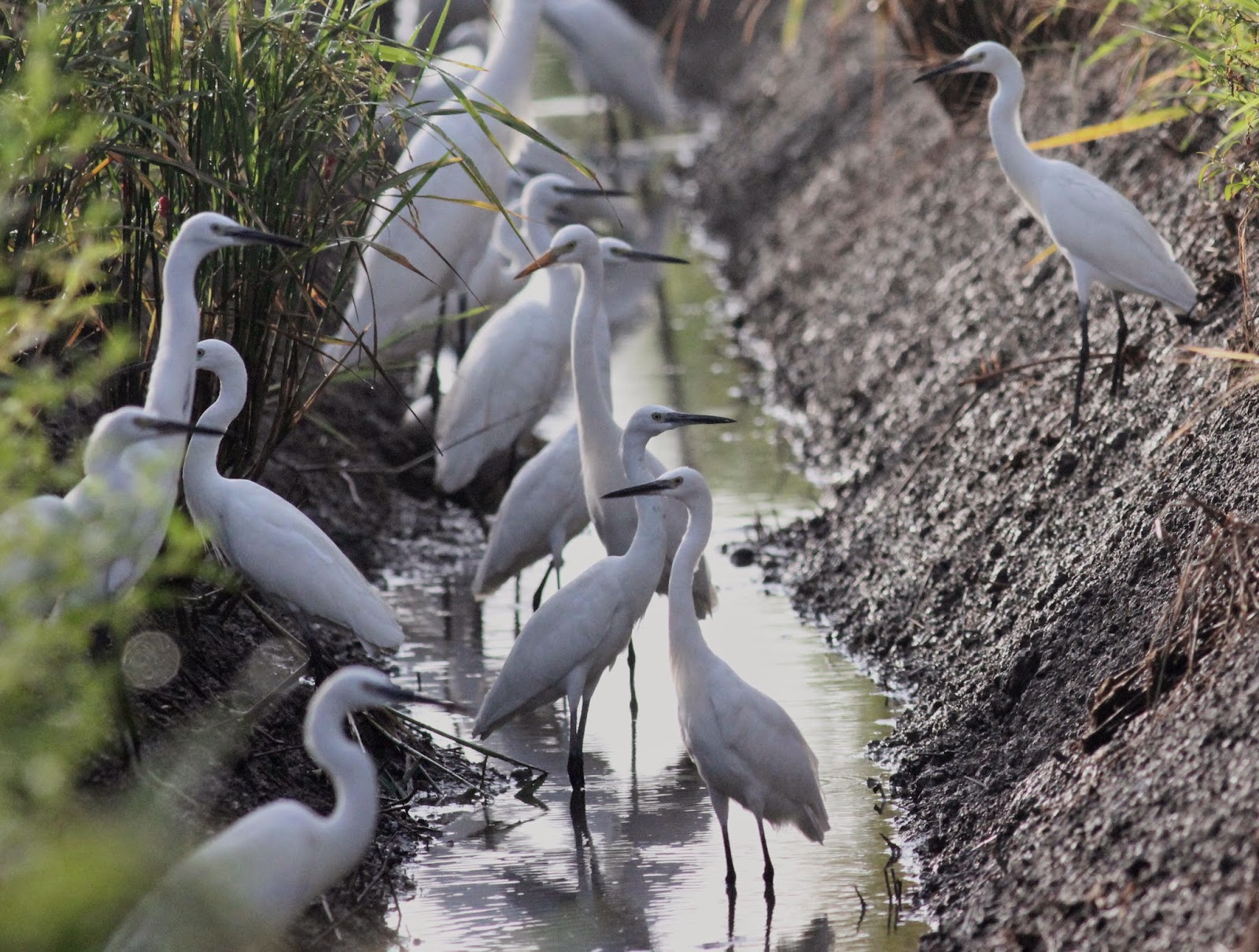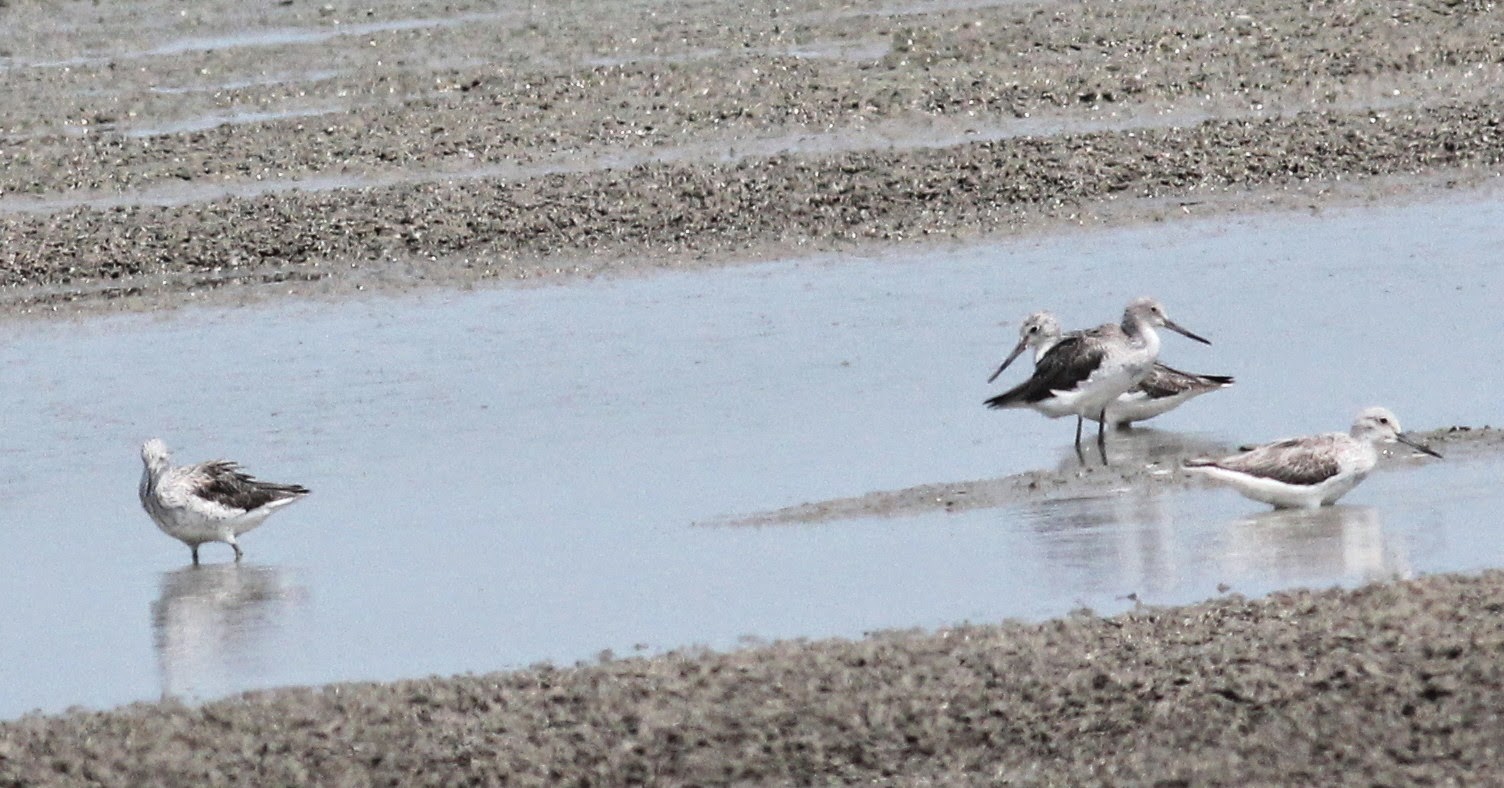Quite often we would come across this immaculate "snow-white" bird during our many outings that we would at times brushed it off as just another common bird - "ah it was just a little egret", "usual suspect", "just a common egret" etc etc. Local Chinese people here would at times call it a "lup-sap chiao" which literally means a rubbish bird. However not many people knew that this Little Egret was once a "scarce" bird and that it has as many as six (6) subspecies/close relatives.
The one which we would often come across in this region namely Peninsular Malaysia or perhaps South East Asia is the species "Egretta garzetta garzetta". It is predominantly white in color with an all black bill and some faint whitish yellow at the base of its bill. During non breeding, its lores are blue gray or at times just plain greyish white or yellow while its legs are dark and feet is yellow. However during breeding season, the lores would turn pink to red but the bill would remain black. Its feet is also reported to turned red ! During courtship little egrets will developed the characteristic plumes on the back of its head, lower throat and back. The male which is reported to be bigger than the females have longer lanceolate crown plumes which can be up to 16cm long.
Because Little Egrets are considered an opportunistic bird i.e taking the advantage of whatever prey that is abundant or accessible in that location, it can be found in various habitats.
River Banks
Rice Fields
Marshes/Ex-Mining Ponds
Irrigation Canal
Mudflats
Sub-species and Distribution
At the moment there are generally six (6) sub-species which have been researched;
i) Ergretta garzetta garzetta- Europe, Africa and most of Asia and South East Asia.
ii) Ergretta garzetta nigripes - Indonesia to Guinea
iii) Ergretta garzetta immaculata - Australasia to New Zealand
iv) Ergretta gularis gularis - West Africa (considered as Reef Egrets)
v) Ergretta schistacea, asha - Red Sea to India (considered as Reef Egrets)
vi) Ergretta dimorpha/Dimorphic Egret) - East Africa, Commoros, Madagascar (considered as Reef Egrets)
(Note: for a detail taxonomic explanation of the various sub-species, kindly refer to www. heronconservation.org).
Of the six sub-species, only two sub-species is reported to have been seen/occurred in Malaysia and Singapore i.e. i) Egretta garzetta garzetta and ii) Egretta garzetta nigripes
i) Egretta garzetta garzetta - legs almost entirely black, feet yellow to greenish
ii) Egretta garzetta nigripes - legs and feet are generally black.(Less common)
Both sub-species is reported as common winter visitors/passage migrants to this region. They would be here between the months from late August and September and returning to their breeding grounds between March - April. However there were articles and books out there reporting that South East Asia is not considered as one of its breeding range. Well, this info should by now be corrected as there were reports of Little Egrets breeding in Peninsular Malaysia ! - Dr. Amar Singh HSS reported in year 2012 of some breeding colonies together with Cattle Egrets and Intermediate Egrets!
Here are some of the common "Egretta garzetta garzetta" which we would usually encountered. (photos here were taken during non-breeding times):
i) Ergretta garzetta garzetta- Europe, Africa and most of Asia and South East Asia.
ii) Ergretta garzetta nigripes - Indonesia to Guinea
iii) Ergretta garzetta immaculata - Australasia to New Zealand
iv) Ergretta gularis gularis - West Africa (considered as Reef Egrets)
v) Ergretta schistacea, asha - Red Sea to India (considered as Reef Egrets)
vi) Ergretta dimorpha/Dimorphic Egret) - East Africa, Commoros, Madagascar (considered as Reef Egrets)
(Note: for a detail taxonomic explanation of the various sub-species, kindly refer to www. heronconservation.org).
Of the six sub-species, only two sub-species is reported to have been seen/occurred in Malaysia and Singapore i.e. i) Egretta garzetta garzetta and ii) Egretta garzetta nigripes
i) Egretta garzetta garzetta - legs almost entirely black, feet yellow to greenish
ii) Egretta garzetta nigripes - legs and feet are generally black.(Less common)
Both sub-species is reported as common winter visitors/passage migrants to this region. They would be here between the months from late August and September and returning to their breeding grounds between March - April. However there were articles and books out there reporting that South East Asia is not considered as one of its breeding range. Well, this info should by now be corrected as there were reports of Little Egrets breeding in Peninsular Malaysia ! - Dr. Amar Singh HSS reported in year 2012 of some breeding colonies together with Cattle Egrets and Intermediate Egrets!
Here are some of the common "Egretta garzetta garzetta" which we would usually encountered. (photos here were taken during non-breeding times):
Here is a somewhat interesting picture (below) which appears like a "Egretta garzetta nigripes" although it may not be conclusive enough. Have a look:
 |
| Egretta nigripes? |
Despite its current status of "Least Concern" and its range is expending as recorded by IUCN, locally the bird (which is named "Bangau Kecil") is a protected species under the Malaysian Wildlife Conservation Act 2010 (Akta Pemuliharaan Hidupan Liar 2010/ Akta 716) - CITES - Appendix III - Schedule II.
SELAMAT MEMBURUNG / HAPPY BIRDING EVERY ONE !
References:
i) www.heronconservation.org - Heron Conservation is the world's leading body of scientific, practical, and conservation expertise on the biology, status and conservation of the herons (Ardeidae) of the world.
ii) Bird Ecology Study Group.
iii) Bird Life International.
iv) Jabatan Perlindungan Hidupan Liar dan Taman Negara, Malaysia.
v) Wikipedia.
vi) Personal field observations.











































































